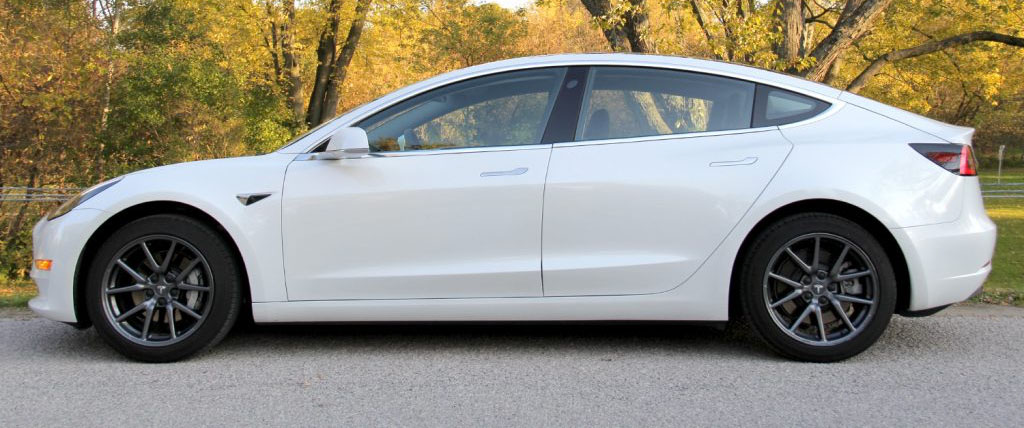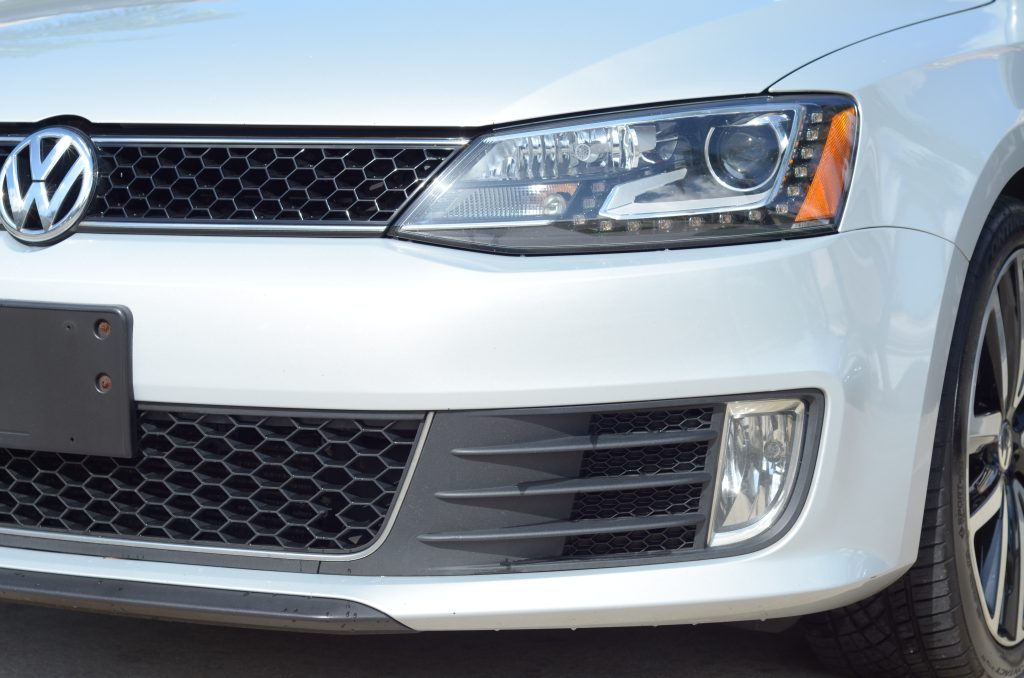By: Sergio Kowalski (Revised By Otaiba Ahsan)

Buying a Tesla is not as crazy as it seems for a young car owner in Canada.
Since getting my Tesla Model 3, one of the most recurring comments that I’ve heard has been “that’s an expensive car” or “how can you afford to have a Tesla?” which has got me thinking about the subject. I mean, I obviously did my math to make sure my finances would not take a nosedive by choosing the Model 3 over the Ford Focus I was leasing, but what seemed obvious to me – after doing the research – did not appear to be apparent to everybody else. With that in mind, I decided to do the work for you and, when the time comes for you, hopefully, I’ve made the decision easier, here are some thoughts.
So, the time has come for you to decide on a new car. You’re a young adult and would like to get a ride that is fun, comfortable, without breaking your bank. We all have dream cars: Ferrari’s, Lamborghinis, etc. For some people, a Tesla is at the same level as those two. You see how sleek the Tesla’s are and the profile of the typical Tesla owner and you may think they are out of your reach for now. But are they really? Let’s break it down:
NOTE: the reference amounts shown here are in Canadian dollars.
Tesla Model 3 Cost in Canada
First off, let’s talk about the car price. In Canada, as of writing this post, there are a few incentives to help push you towards buying an electric vehicle as opposed to a regular car. For example, the Federal government will “give you” $5,000 if you buy a “Zero-Emission Vehicle” that has a Manufacturer’s Suggested Retail Price lower than $65,000. In Tesla’s case, two trims of the Model 3 fit the bill: the Model 3 Rear Wheel Drive (RWD) and the Model 3 Long Range. If you were to go for the most basic Tesla Model 3 RWD, you would be looking at a sticker price of $54,990 before any incentives and taxes. Once you include the federal incentive, the price drops to $49,990 before taxes. Doesn’t look so steep now, does it?
But let’s get real for a bit, how many people under 30 have $56.5k (for the after-tax price) just laying around in this day and age? I certainly don’t. So, most people will resort to financing, at this point you have two options, either finance through Tesla or find a third-party lender. For the sake of argument, we’ll talk about financing through Tesla as it is a bit more standard for everyone. Disclaimer: if you are not (at least) a Permanent Resident or a Canadian citizen, that option won’t be available, you can resort to other institutions, we chose a Credit Union that decided to help us out.
Tesla works currently with three banks, Scotiabank, RBC, and BMO. No down payment is required other than the $250 deposit when you reserve the car. This added to the Federal incentive brings your down payment up to $5,250. If you live in BC or in Quebec, you get an additional $3,000 or $7,000 respectively from your provincial government.
Now let’s look at the numbers assuming we’re in Ontario, which is where I live. If you’re from another province, you can use this math and plug in your own numbers, so far we have $5,250 for a down payment for most people in Canada ($250 from you and $5,000 from the government) let’s plug those numbers into the Tesla calculator, I’ll use my estimates to be able to include taxes but keep in mind:
- I chose the stock 18-inch wheels and Pearl White Multi-Coat colour, which are both included in the purchase price
- If you choose a different colour, to have 19-inch wheels, or to include any other add-ons like Enhanced Autopilot, then they will be added to the total cost
When I crunched the numbers, here’s what came out if I were to have financed through Tesla:
- Total purchase price: $63,428.87 (This includes all taxes and fees for Ontario)
- Total down payment: $5,250 ($250 from you and $5,000 from the Federal Government)
- Amount left to pay: $58,178.87
- Finance terms: 96 months at 6.83% APR
- Monthly payments: $788
You may still be thinking, that seems like an expensive car, it is costly as a vehicle itself, but let’s take a look at what you would paying for a 2023 Volkswagen Jetta GLI, the other option I was looking at when I started shopping for a new car:
Typical Gas-Powered Car Cost

2023 Volkswagen Jetta GLI Cost
- Total purchase price: $41,781.75 (All taxes included for Ontario, not sure on the fees as the website doesn’t specify)
- Total down payment: $250 (No government incentive here)
- Amount left to pay: $41,531.75
- Finance terms: 84 months at 7.99% APR
- Monthly payments: $647
So, final numbers, Tesla monthly payments vs Volkswagen Jetta GLI, $788 vs $647. That seems pretty cut and dry, right? If you go with the Jetta, you are saving yourself almost $141 PER MONTH. Who would not take that? It seems like the obvious choice. Not so fast, we have to take into account associated costs the with the cars themselves. Let’s leave out the insurance costs because that varies wildly from person to person. But here are a few of the costs of having each vehicle:
2023 Volkswagen Jetta GLI Fuel Cost
According to this calculator from CAA, driving 20,000 km per year will give you an annual cost of ~$2,451.83, which comes out to approximately $204.32 per month. The 2023 Jetta GLI gas tank holds 49 liters, at a current price of $1.61 per litre on average, that would come out to $78.89 every time you fill the tank, I used to fill on average once a week. So far we have: $647 in car payments plus $204.32 in gas costs, gives us a subtotal of $851.32 per month.
2023 Volkswagen Jetta GLI Maintenance Cost
As with all vehicles, the Volkswagen Jetta has to have regular maintenance. According to Edmund’s, if you drive on average 20k Kms per year, the costs for the first five years are:
- Years:
- 1: $56
- 2: $374
- 3: $407
- 4: $887
- 5: $1819
In the end, for the first 5 years of owning the Volkswagen Jetta GLI your total cost would approximately be: $38,820 for car cost, $12,259.15 for fuel, and $3,543 in various maintenance costs. In total it would be: $54,622.15 to finance the ownership of a Jetta GLI for its first 5 years without adding in insurance cost.
2023 Tesla Model 3 Charging Cost
As you know, the Tesla Model 3 is an electric car. The best way to charge your car will be at home, where the power cost will probably be lower than charging at public chargers, and you would also have the benefit of charging at your own convenience. In my case, I installed the Tesla wall charger at home, which will give me a full charge from around 20% to 87% (Tesla recommends to not charge to 100% every time to improve battery performance) in around 8 hours, another cool thing is that some areas in Ontario have Time of Use electricity rates, I always schedule it – yes! You can do that! To charge at off-peak times, normally overnight or on the weekends when the rates are lower.
Let’s use the number $0.12 per kWh for reference for today’s cost. For daily driving, Tesla recommends to only charge your car’s battery between 80-90%. Personally, I charge once it gets to 20% and up to 80%. Taking into account that the Model 3 has a 58-kWh battery, I would typically charge from 11.6 kWh up to 46.4 kWh, so I am charging 34.8 kWh every time. If we multiply the electricity cost ($0.12/kWh) by the amount of kWh that I charge for (34.8 kWh), we see that every time I charge at home, it costs me $4.18 in electricity. Currently, I’m charging once a week so it would be approximately 4 times a month ($4.18*4) I am looking at a monthly “fuel charge” of $16.72.4 or $200.64 per year pretty neat, eh?
2023 Tesla Model 3 Maintenance Cost
Although a Tesla does not have as much maintenance as an internal combustion engine (ICE) car, it still has some associated costs to owning it. I’ll break down the most common ones below based on this post from another post from the Tesloid Blog:
- The cabin air filter should be replaced every two years. This can cost from $75 to $115 depending on where you go. So, it comes out to $37.50 to $57.50 per year on average. Let’s split the difference so $47.5 per year.
- Tire rotation, Tesla recommends that tires be rotated every 10,000 kms. If you are driving an average of 20,000 kms per year, you would have to rotate twice a year with a cost that goes from $75 to $100. That would be $150 to $200 per year if you do it twice. Once again, lets split the difference so $175 per year.
- Brake fluid and pad should be tested every two years and replaced as needed. With regenerative braking, the use of the actual brakes is greatly reduced, but, let’s assume the worst-case scenario and say you have to replace every two years. The cost goes from $130 to $145, split the difference, $140 every two years.
- Air conditioning for the Model 3 should be serviced every 6 years as per Tesla. This has a cost of approximately $65.
Assuming you follow the maintenance schedule to the letter and every time you go to a Tesla Service Centre where they would charge a bit more, this is how it would look like for you to own a Model 3 for 5 years:
- Years:
- 1: Tire rotation $175
- 2: Full inspection and service $630
- 3: Tire rotation $175
- 4: Full inspection and service with brake flush $680
- 5: Tire rotation $175
The Verdict
How much does a new Tesla Model 3 really cost in Canada? Let’s wrap these numbers up, if you have a Tesla Model 3 with the conditions set out here your expenses would look something like this: $47,280 for car cost, $1003.2 for “fuel”, $1,835 for various maintenance. In total, you are looking at $50,118 for 5 years with a Tesla Model 3 without adding in insurance cost.
As you can see, when you break down all the numbers and really look into the differences between a Tesla Model 3 RWD and a 2023 Volkswagen Jetta GLI, the difference in cost over 5 years is approximately $4504.15 in favour of the Tesla Model 3. So, it may seem more expensive as a car, but in the long run, it is better to go for it instead of another car that may not offer you the same amount of comfort and luxury.
But now, I ask you: What do you think? Does it still make sense to not buy a Tesla, or is it the perfect time to make the jump to an electric vehicle? If you decide to pull the trigger on the Tesla let me know what made you make that decision!

Good comparison
When I read this blog I thought “Right – what about degradation of the very expensive battery” – so I enlisted Goggle (sees everything) and found the following:
“Elon stated that lab tests gave 80% battery retention at 500,000 miles or about 4% degradation per 100,000 miles.” Therefore, if a driver only travels 13,500 miles per year, it would take more than 7 years to degrade the battery 5% – from 650 km per charge to 600 for the long range S. Obviously not a serious problem. Thanks for the info.
Well done analysis.